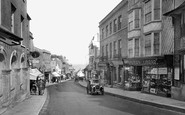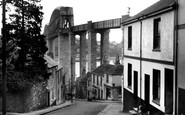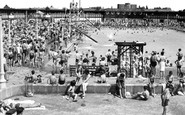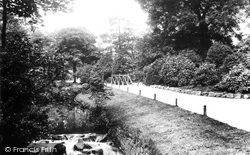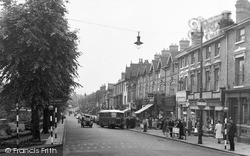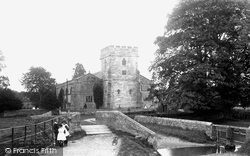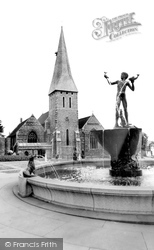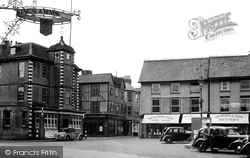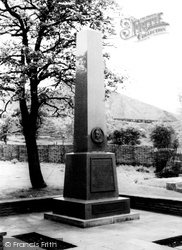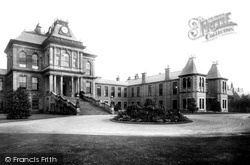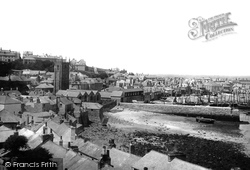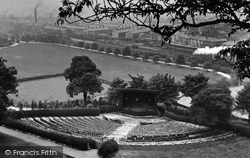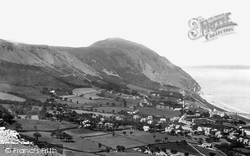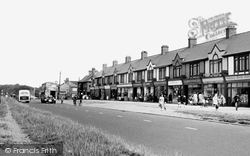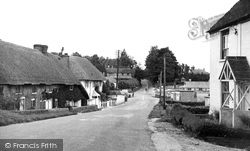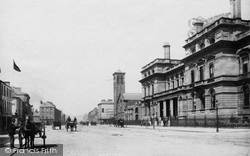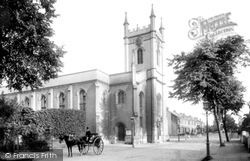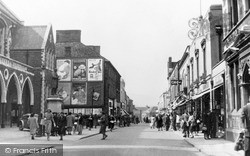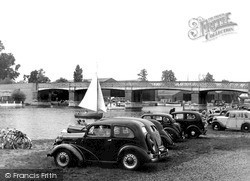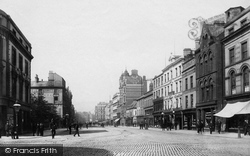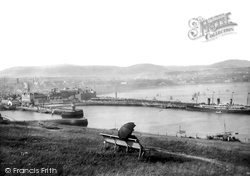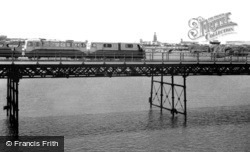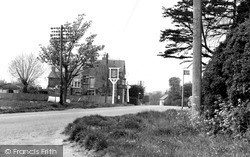Places
Sorry, no places were found that related to your search.
Photos
Sorry, no photos were found that related to your search.
Maps
1 maps found.
Books
3 books found. Showing results 337 to 3.
Memories
347 memories found. Showing results 141 to 150.
Grandad's Shop
For many years Dunster's Library in Broad Street was owned and operated by my grandfather, Sydney Mould. The shop was over three storeys, and contained many sections. It was a bookshop and stationers, It sold seaside ...Read more
A memory of Lyme Regis in 1950 by
First Holiday
This was around 1950. Me Ma had a sister who was my Aunt Lilly, she married a Yorkshire man from Leeds who was my Uncle Jack and they had one daughter called Jean who was a year or so older than me and they lived in Gipton, Leeds ...Read more
A memory of Newburn in 1950 by
Happy Days In Tre Ifor Llwydcoed
My grandfather William Forey and gran Nellie, moved to Tre Ifor, when they demolished Dare Street in Aberdare. I think it was around the 1930s or 40s. The whole street moved to these new houses, and most stayed ...Read more
A memory of Llwydcoed in 1950 by
Inkerman Barracks 1948 Tojanuary 1951
My father was a military policeman and we lived at no 17 MSQ (just around the corner from these houses and now known as Wellington Terrace.) At the front of our house there were woods across the road and a ...Read more
A memory of Knaphill in 1949 by
Early Memories Of Saltash
I lived in a two story flat, over what was Barclays Bank. Almost opposite was the Guidhall and St Nicholas and Faith Church. We had a clear view from our lounge and upper bedroom window of the road leading to the station ...Read more
A memory of Saltash in 1949 by
Summer Holidays
or thereabouts. Blackcurrant picking somewhere in the Drayton area, the smell of them today knocks 60 years off my age. Used to go fruit-picking during the Summer holidays with Janet Basham who lived on Highland Road, ...Read more
A memory of Drayton in 1949 by
Oxo And A Slice Of Bread
This photo brought back memories of 'swimming' of which mostly was done under water. I had a bit of trouble co-ordinating arms and legs. The height of adventure was to use the slide (shown in the photo). Splash into the ...Read more
A memory of Enfield in 1949 by
Pontrhydyrun Avondale Road
I am Roger Davies of 11 Avondale Road, DOB 19.09.43. Went to Sebastopol Infants school 1948 and then to Griffithstown Junior Mixed - Bryn Jones prior to 11+ ! West Mon 1954. - Harrison, Garnet, et al. Recall ...Read more
A memory of Pontrhydyrun in 1948 by
I'm From Aughnacloy
I was born on Sunday 6th Frbruaqry 1944 in the residential area of the Central Bar, Moore Street, Aughnacloy, Nurse Shields was the midwife. The family moved to Cross Lane prior to moving to Moygashel in 1949. I remember ...Read more
A memory of Aughnacloy in 1948 by
Rivacre Baths.
For those who never saw (or may have forgotten), the photo shows the view you had after coming in through the main entrance. The large fountain can be seen in the foreground, and was enjoyed by many children as they ran around ...Read more
A memory of Little Sutton in 1947 by
Captions
374 captions found. Showing results 337 to 360.
They remained at Endcliffe until removed to make way for a road improvement scheme and were re-erected at Hunter's Bar.
Also lost during the town centre development was the Wesleyan Methodist Church, which had stood on the corner of the Parade and Newhall Street.
These had painted oak screens, which were removed during the Reformation, giving the nave a broader and more expansive appearance.
In the foreground would have been a collection of dilapidated shops, and a large wooden maltings out of shot to the right.
The buildings housing the premises of Hedges & Son (right), however, have been demolished and replaced by a road and open space leading to a pedestrian shopping precinct.
The bronze head on the statue was designed and cast by the sculptor Fred Mancini.
The site purchased lacked road access and surrounding landowners refused to sell, so the Corporation simply ignored protests and built a road anyway.
Many of the buildings can be recognised today, but they are now separated from the water in the harbour by walls supporting a road and a walkway.
More rooftops, a passing steam train (they were being replaced by diesel- powered locomotives at this time) and the sweep of the park express progress. The bandstand has arrived.
The majestic sweep of the fertile fields down to the coast is also marked by the workings and spoils of man's need for the stone that is quarried from the mountain on this stretch of the coast.
Here we see it from Wallasey Road looking up what has always been known as Liscard Village, even though it is a road.
A busy parade of shops with distinctive gables line the road at this point. Several prams can be seen outside, and a child rides happily on the pavement on a tricycle.
The main road we see in this photograph is the busy A343 Andover to Salisbury route. At the foot of the hill is a junction. Left is for Nether Wallop and right is for Over Wallop.
The broad straight streets tell of land recovered from river and docks. The church tells of the human needs that followed.
St Mary's was built between 1877 and 1878 by John Cundall in brick with a prominent steeple. The interior is brick-lined. The tower was a mere 75 feet high and has been cemented over.
The land was donated by Hywel Gwyn, and a statue of him was unveiled outside a year later.
By the river, a road leads off Walton Lane under the bridge towards Walton Marina.
Between the golfers and the clubhouse was Burdon Lane, which until the 1950s joined the Brighton Road as it crossed the Downs by way of a dangerous blind junction.
The broad thoroughfare reflects not only the market town but also its link with the sea. Below the cobbles still runs the Belfast River, which once had quays allowing ships to come off the Lagan.
The author and his family have had many a happy holiday on this site. My parents eventually had several vans on this field.
The row soon became known as 'the ham and egg parade', and very popular it was too. But as in all English seaside towns, package holidays abroad brought about the demise of these places.
Heysham became the centre for travel to the Isle of Man, and in 1923 the Fleetwood services were transferred there.
Obviously still viable in these photographs, Southport Pier was closed in the 1990s; it was demolished and rebuilt at a total cost of £7 million, and was reopened in 2002.
Mid-way between Chailey and Haywards Heath is Scaynes Hill, and this photograph shows the summit of the hill. Though there is still a pub here, it is now called the Farmers.
Places (0)
Photos (0)
Memories (347)
Books (3)
Maps (1)

